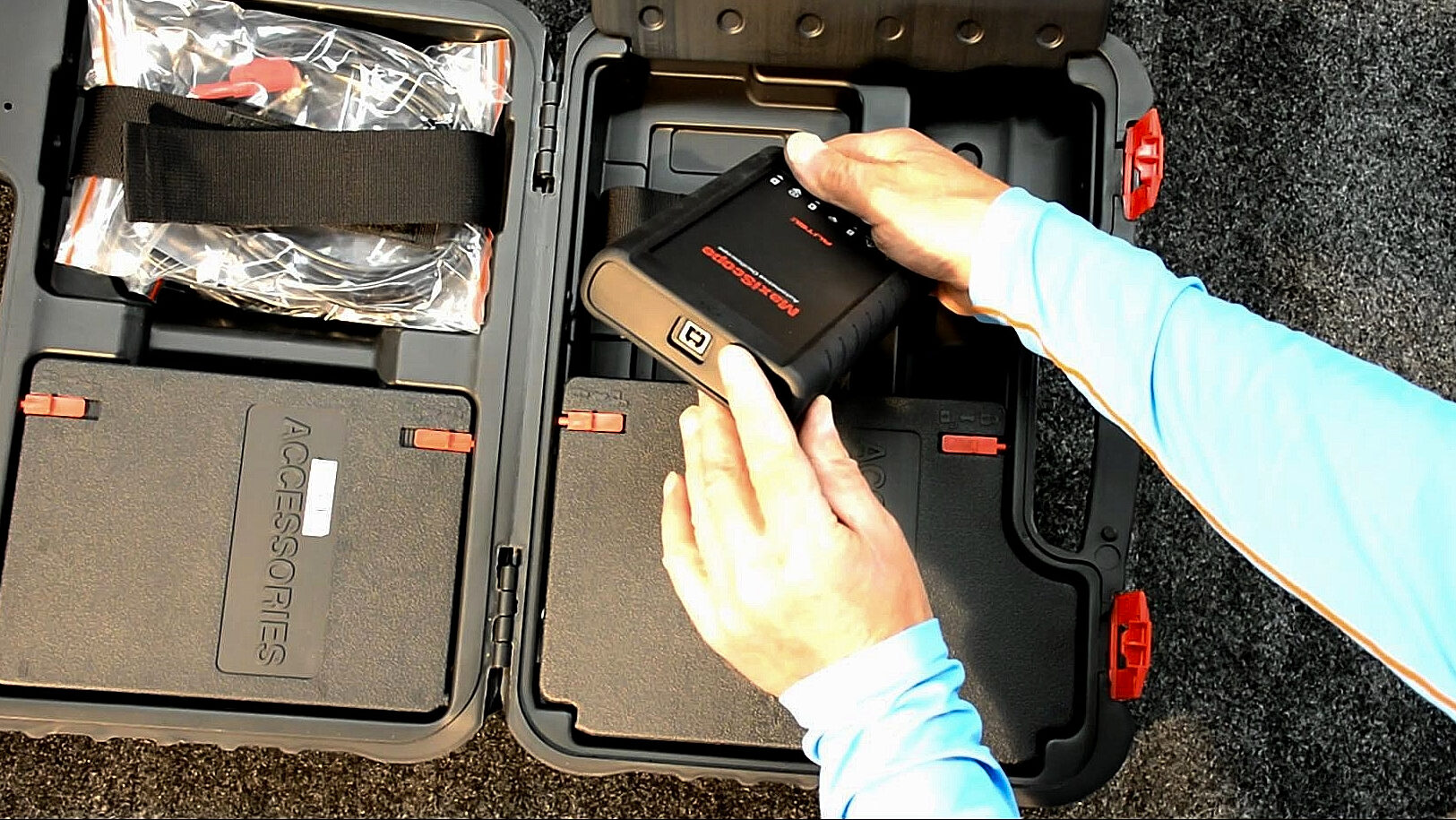An Autel® MaxiScope Provides Pinpoint Diagnostics…
There is no other tool that can diagnose and troubleshoot automotive engines, transmissions, electrical systems and chassis as precisely as a lab scope. While scan tools rely on the vehicle’s computer for data, the lab scope provides valuable image patterns in real time waveforms. The Autel® MP408 MaxiScope is the optimal test tool for a busy automotive shop or serious ‘DIY’ user, delivering quick, pinpoint answers at an affordable cost.

Scan tools are expensive and often require subscriptions for annual software renewal. Some scan tools come with cloud-based technical services. Despite the high cost of this technology, a scan tool is no better than the factory information programmed into the vehicle’s PCM, ECU or ECM. Typically, the OEM programming will not trigger a trouble code for a pending parts failure. The code comes only after the part actually fails.
Worse yet, many technicians and ‘DIY’ consumers rely on trouble codes alone. If the vehicle’s computer is defective, or if the parameters (PIDs) allow for component wear, codes can be unpredictable. The scan tool may not throw a trouble code when necessary. Sometimes, it’s the other extreme, like the infamous “#1 Cylinder Misfire” with a list of possible causes. The “#1 Cylinder Misfire” has been a money pit for those who do their own service work and depend on a code reader to suggest which parts might be needed.
When the vehicle’s computer does not catch a failing part, the first indication of trouble is when the part is fully defective and triggers a code. For a town car, this may lead to an inconvenient ‘AAA’ tow to a repair facility. For a 4×4 driven into rugged backcountry, an unsuspected problem can strand your vehicle along a remote trail.

A lab scope works independently of the onboard computer, looking instead for signs that the engine’s mechanical condition, spark reliability, fuel or injection system components or an electrical device has either failed or is on the verge of making trouble. A “relative compression” check, set up in minutes without removing a spark plug, uses starter motor resistance to compare the compression between cylinders.
An in-tank fuel pump, vital for vehicle reliability, can be tested for a bad commutator segment by simply reading the amperage draw of the rapidly spinning pump motor. Based upon current draw, read in milliseconds, each segment of the commutator contributes a unique, real time waveform image. Variations indicate segment wear or defects that will not throw a code—but could leave your vehicle stranded when the segment finally fails, and the pump motor parks at that segment. Unable to restart the pump, a trouble code will finally occur.
The lab scope works with two variables: amount of voltage and time intervals. Electrical current measured by the lab scope in millisecond time intervals creates waveforms. Through the use of proprietary software and displays, these waveforms appear on a PC or laptop screen. The waveforms serve as troubleshooting and diagnostics patterns. In minutes, without getting hands dirty or taking apart the vehicle, you can perform an in-tank electric fuel pump or relative compression test. You can do this in your driveway or at a trail staging area.

Voltage over a time interval can create a moving waveform. The shapes and forms are distinct and become familiar diagnostics images. Captured, saved and analyzed by a trained eye, these patterns illustrate the voltage strength over time. Pressure sensors are available to convert a vacuum or pressure source signal into a voltage reading. That voltage over a time interval can also create a waveform and distinct patterns.
With the use of a pressure pulse sensor or in-cylinder high pressure transducer, a running engine can be tested to determine its mechanical condition, the spark efficiency or fuel injector functions. Electrical device integrity and wear or intermittent troubles can also appear as patterns…While the scan tool waits for onboard database clues that something is wrong, the lab scope creates waveform images based upon real time functions and behaviors taking place within an engine, fuel and spark system, transmission, electrical devices or a chassis.

Given the choice between a lab scope and a scan tool, I will pick the lab scope. The Autel® MaxiScope would be my first choice for its price point and competitive features. (See the HD video for details.) Expect a learning period for the MaxiScope or any other brand lab scope. For those interesting in training on the lab scope and learning patterns for diagnostic troubleshooting, a series of detailed training videos will soon be available at the magazine’s Vimeo On Demand channel.


2 comments
I have tried to sign up to the forums but can’t get past the question: What is the name of the magazine. I put in 4wdmechanix Magazine and it will not accept that answer. I get past the captcha thing but can get no farther. Help.
Frederick…Try a space between the “4WD” and “Mechanix” (4WD Mechanix Magazine). We welcome your participation at the forums and look forward to your topics and replies.
Regards,
Moses Ludel